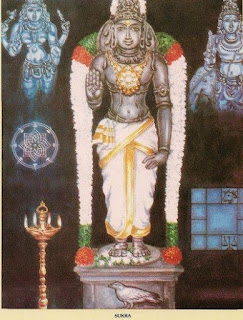Significance of Garlands (Var-mala) in Wedding Ceremonies
The tradition of Varmala, a beautiful garland of flowers used in Indian weddings comes from ancient times, denoting a proposal of marriage.
In the past, a marriageable girl would follow a practice called “Swayamvar”, where she would choose her life partner among a list of suitors and would identify the husband of her choice by putting the flower garland around his neck, after which the marriage ceremony would be held immediately.
Consisting of flowers and thread, the garland symbolizes happiness, enthusiasm, excitement, aspiration, zeal & beauty; the thread is a medium to secure these feelings and emotions. Just as the thread never leaves the flowers, even though they lose their charm and luster with time, the same way the married couple takes vows to never leave each other through ups and downs of life and share their lives with mutual understanding, love, respect, trust, faith, and passion.
According to the Hindu marriage customs, the youth marries with the aim of performing religious rites in the company of his wife for the spiritual evolution of both. A wife is said to be a “saha dharmacharini”, which means the lady who performs the duty enjoined in company with her husband. Like the sacred thread worn by the Brahmins, these decorative garlands symbolize spirituality. A husband by putting one of his two garlands around the neck of his would-be wife bestows on her half of his spiritual force, and she repeats the process in her turn shares hers with him. To conclude, this is the main end and aim to attain which all the subsequent rites are observed to be continued thereafter day after day till perfection in evolution is attained in both taking many births even if need be as husband and wife.
When two people marry, their souls unite and they become a single entity, placing joint aspirations before individual ones.
Consisting of flowers and thread, the garland symbolizes happiness, enthusiasm, excitement, aspiration, zeal & beauty; the thread is a medium to secure these feelings and emotions. Just as the thread never leaves the flowers, even though they lose their charm and luster with time, the same way the married couple takes vows to never leave each other through ups and downs of life and share their lives with mutual understanding, love, respect, trust, faith, and passion.
According to the Hindu marriage customs, the youth marries with the aim of performing religious rites in the company of his wife for the spiritual evolution of both. A wife is said to be a “saha dharmacharini”, which means the lady who performs the duty enjoined in company with her husband. Like the sacred thread worn by the Brahmins, these decorative garlands symbolize spirituality. A husband by putting one of his two garlands around the neck of his would-be wife bestows on her half of his spiritual force, and she repeats the process in her turn shares hers with him. To conclude, this is the main end and aim to attain which all the subsequent rites are observed to be continued thereafter day after day till perfection in evolution is attained in both taking many births even if need be as husband and wife.
When two people marry, their souls unite and they become a single entity, placing joint aspirations before individual ones.



Comments
Post a Comment